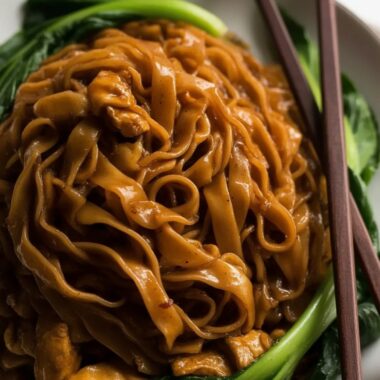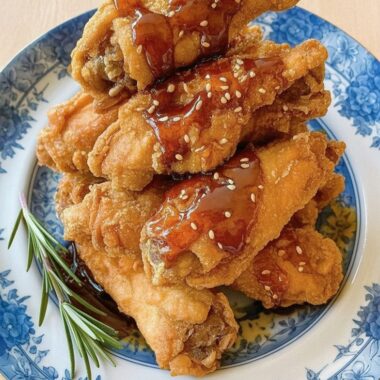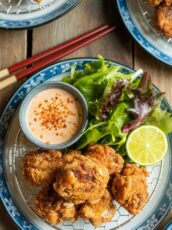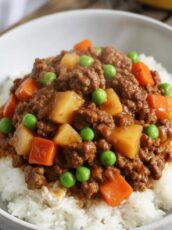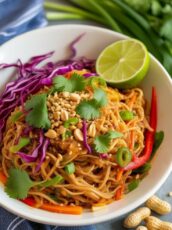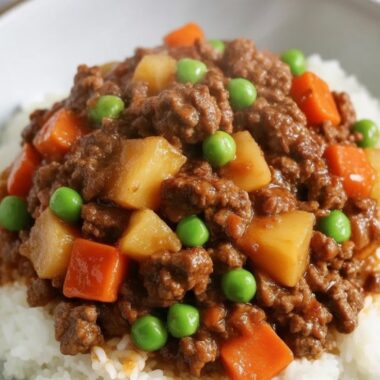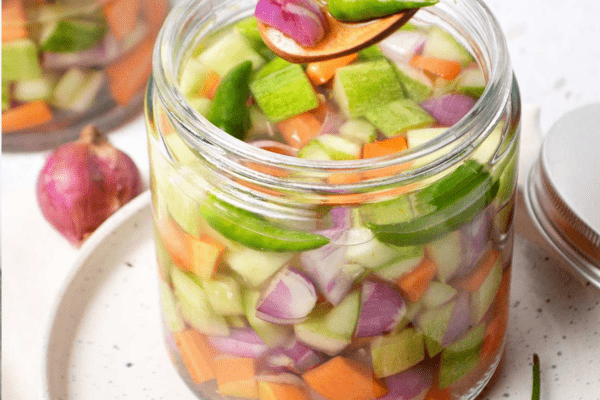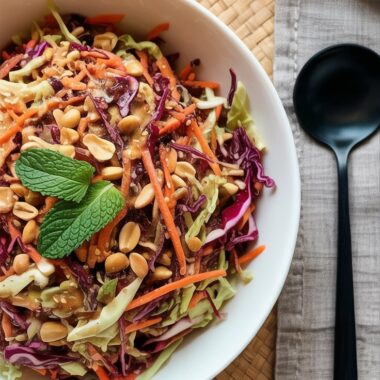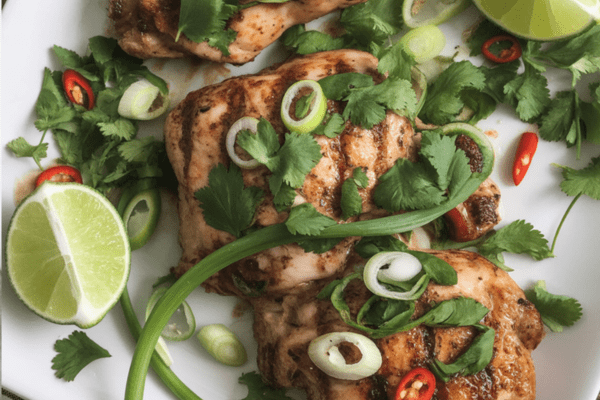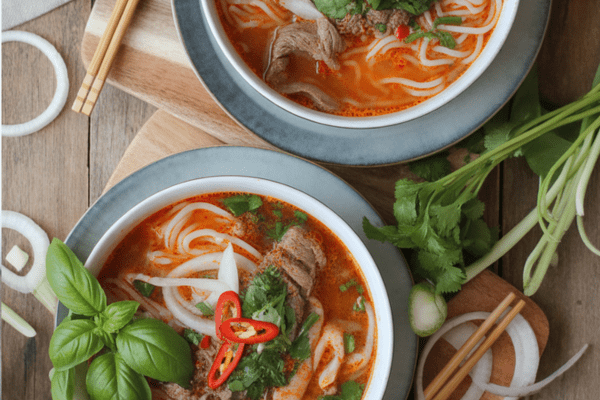Dwaeji Galbi Jjim, or Korean Braised Pork Ribs, has become a quiet superstar in my kitchen for those days when I want something deeply satisfying but still easy to pull off. The magic of this dish lies in how an ordinary rack of pork ribs transforms into melt-in-your-mouth, saucy perfection, all in just one pan! The vibe is joyfully messy — sticky fingers, rich aromas, and a table full of happy faces.
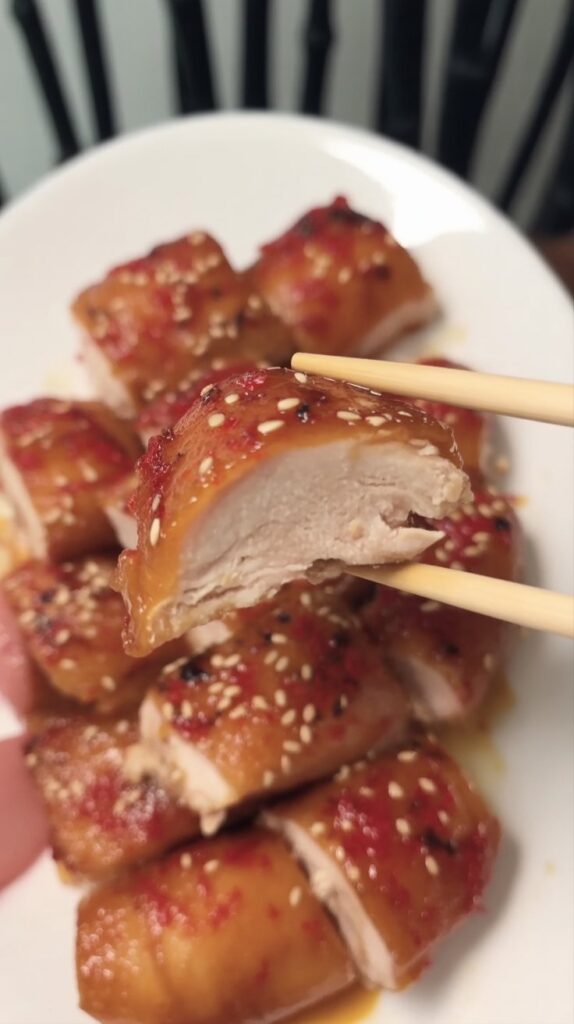
I first got hooked on this dish after watching a Korean actor cook it for a couple of Hollywood stars on TV. Something about seeing folks from different worlds bonding over a steaming pot of spicy, glossy pork ribs made me want to try it at home. Now, it’s a go-to for Sunday dinners and any time I want to show a little extra love at the table.
What Makes Korean Braised Pork Ribs Truly Memorable
This dish is a beautiful blend of spicy, sweet, and umami. It’s proof that with the right sauce and slow braising, even humble pork ribs can taste like a celebration.
- Bold Sauce, Layered Flavors: The sauce is punchy — soy sauce for depth, fish sauce for that subtle ocean note, ketchup for tang, and a handful of red pepper flakes for addictive heat. There’s a little sweetness, too, which caramelizes the ribs as they braise and gives the meat a glossy finish.
- Ribs with Real Character: Baby back ribs are perfect here. Once slow cooked, they soak up the sauce and almost slide right off the bone.
- One Pan, Effortless Results: After a quick sear, everything goes back in the same pot. There’s something so comforting about letting a dish quietly simmer on the stove while you get on with the rest of your day.
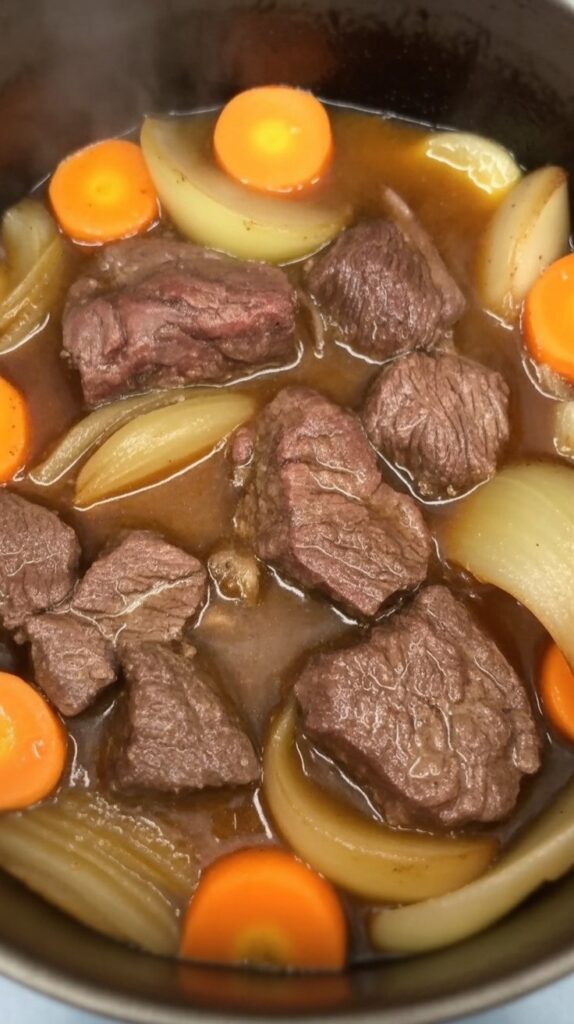
Ingredient Insights from My Own Kitchen
Over the years, I’ve found a few little tweaks that can make this dish your very own:
- Baby Back Ribs: These are lean enough but still have the right amount of fat to stay juicy as they braise. I always cut them between the bones for more sauce coverage.
- Soaking and Prepping: I didn’t understand the soaking step at first, but after trying it, I noticed it really does take away any lingering porkiness. I soak the ribs for half an hour, then pat them dry.
- Vinegar: This small trick works wonders at neutralizing strong pork aromas. It’s one of those classic bits of kitchen wisdom I picked up from Korean friends.
- Red Pepper Flakes: Adjust to taste, especially if you have kids at the table. Gochugaru gives authentic flavor and lovely color, but even regular chili flakes work.
- Carrots and Potatoes: I sometimes add chopped carrots and potatoes right as the braising starts. The veg soak up the sauce and round out the meal.
- Finishing with Cheese: Sounds unusual, but a sprinkle of shredded cheese melted on top is wildly popular, especially with teens. It becomes gooey and balances the heat beautifully.
Tips for Cooking and Serving
Cooking Dwaeji Galbi Jjim feels like a lazy Sunday project, but it’s more forgiving than you’d think.
- Searing: Make sure you really brown the ribs well in the beginning. This step locks in flavor and gives the final dish that deep, roasted taste.
- Simmer Low and Slow: It’s a little exercise in patience, but keeping the heat low ensures your pork comes out tender, not dry. The longer it sits in the sauce, the more the flavors meld.
- Extra Sauce: Sometimes I intentionally make a little more sauce and toss in some glass noodles when reheating. The noodles drink up all that spicy, savory goodness.
- Side Dishes: At home, I rarely serve this without a pot of steamed rice. But it also pairs wonderfully with cucumber salad or radish kimchi for crunch and contrast.
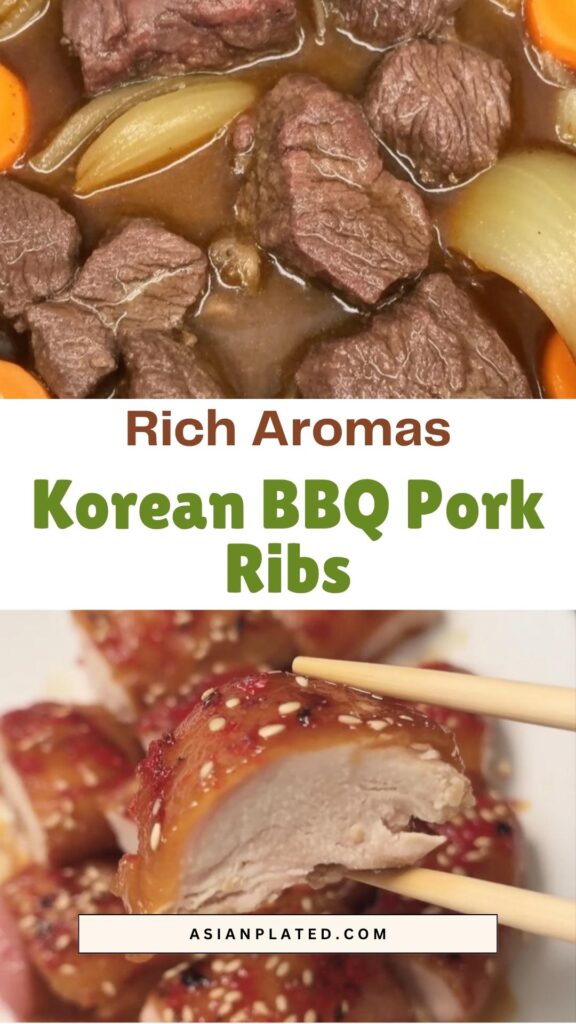
This Dish, Your Way: Everyday Ideas
Dwaeji Galbi Jjim isn’t just for fancy dinners. It’s perfect for family meals, meal prep, or anytime you want leftovers that only get tastier by the day.
- Busy Weeknight: Prep everything in advance, then let it simmer while you do something else — the house smells incredible by dinner time.
- Meal Prep: Portion into containers for super satisfying weekday lunches. Pork ribs reheat like a dream.
- Entertaining: It’s an instant conversation starter at the table, especially with steamed rice or glass noodles to catch all that sauce.
How to Store and Reheat
If you have any leftovers, you’re in luck. The flavors get even better after a rest in the fridge.
- Refrigerator: I store the ribs and sauce in an airtight container. They last beautifully for four to five days. A quick spin in the microwave or a gentle reheat on the stovetop brings it right back to life.
- Leftover Sauce: Don’t throw it away! Toss in some glass noodles, or even cook it with eggs the next morning for a fast, flavor-packed breakfast.
Real-Life Questions Answered
Can I use different pork cuts?
Absolutely. Pork belly works, though it’s richer and a bit fattier. Just cut back on the oil if you use a fattier cut.
Does it freeze well?
Yes! Just cool completely, freeze in batches, and reheat gently with a splash of water.
Is it very spicy?
It’s got a kick, but you can always tone down the chili flakes to suit your crowd.
Any shortcuts for busy days?
You can brown the ribs up to a day ahead, or even cook everything in a pressure cooker to save time.
If you make Dwaeji Galbi Jjim, I hope it brings as many smiles to your table as it does to mine. Cooking it always feels like I’m channeling a bit of that Korean dinner-party energy — generous, slightly messy, and full of bold flavor. Enjoy it with people you love, and don’t forget lots of rice for mopping up every last bit of sauce.
Korean BBQ Pork Ribs
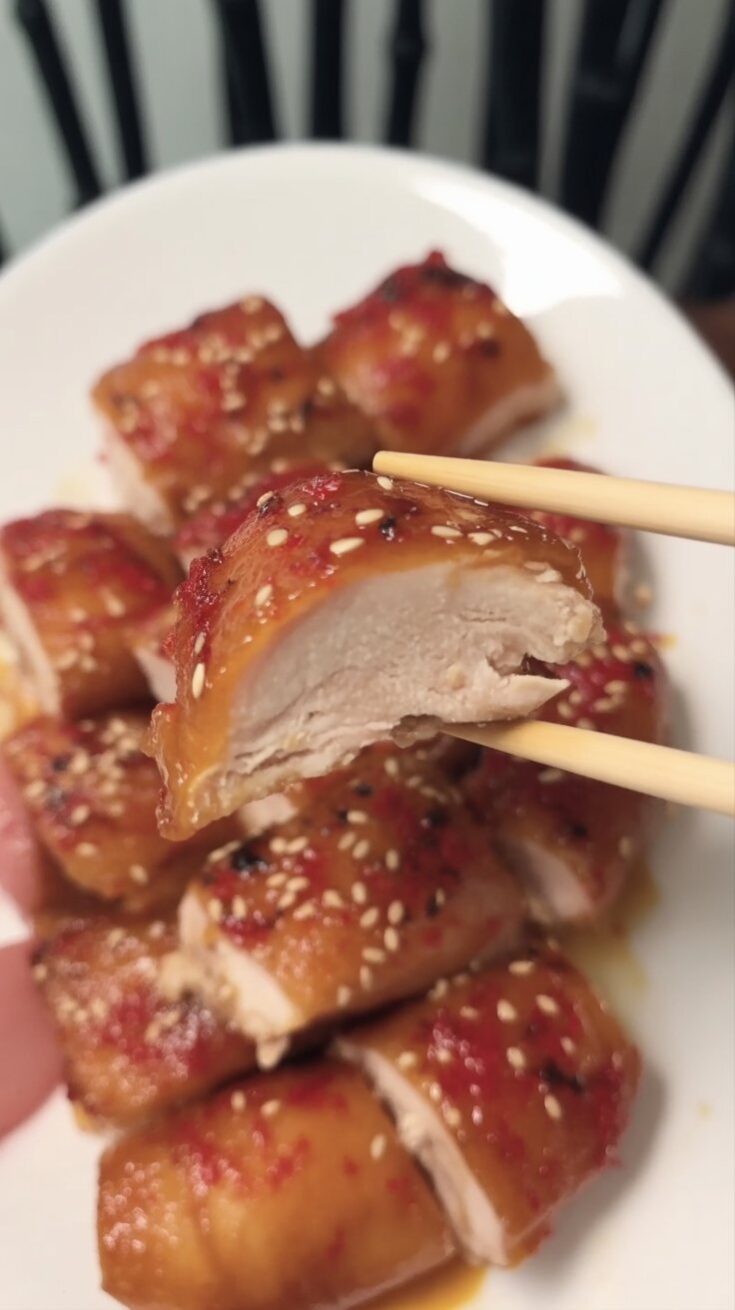
These Korean braised pork ribs, or Dwaeji Galbi Jjim, feature tender pork simmered in an irresistible blend of spicy, sweet, and savory flavors—all in one pan.
Ingredients
- 1.5lbs baby back ribs, cut along the bones
- 2.5tbsp soy sauce
- 2.5tbsp fish sauce
- 1.5tbsp minced garlic
- 2 stalks scallions, chopped into 2-inch pieces
- 1 whole onion, quartered
- 1–3btbsp pepper flakes (adjust for spice)
- 2.5btbsp sugar
- 1btbsp ketchup
- 1/2btbsp vinegar
- 1cup water
Instructions
- Prep the Ribs: Start by giving your baby back ribs a good rinse. Drain well.
- Sear for Flavor: Heat a splash of oil in a large pan over high heat. Add the ribs, searing each side until gorgeously golden brown.
- Caramelize: Mix in the vinegar and sugar, stirring until the sugar is melted and the pork aroma softens.
- Build the Sauce: Add soy sauce, fish sauce, garlic, onions, scallions, pepper flakes, and ketchup. Toss everything together so the ribs get a full coat of that flavorful sauce.
- Sauté & Simmer: Let the ribs sauté for a few more minutes to soak in all the flavors, stirring occasionally.
- Braise: Pour in 1cup water, give everything one last stir, cover, reduce the heat to low, and let it braise for 40minutes.
- Serve & Enjoy: Serve piping hot with steamed rice or noodles, and your favorite Korean side dishes.
Nutrition Information:
Yield: 3 Serving Size: 1Amount Per Serving: Calories: 675Total Fat: 43gSaturated Fat: 15gTrans Fat: 0gUnsaturated Fat: 25gCholesterol: 165mgSodium: 2466mgCarbohydrates: 22gFiber: 1gSugar: 15gProtein: 48g
Asianplated.com, occasionally offers nutritional information for recipes contained on this site. This information is provided as a courtesy and is an estimate only. This information comes from online calculators. Although allchickenrecipes.com attempts to provide accurate nutritional information, these figures are only estimates.
Try other Korean recipes:

